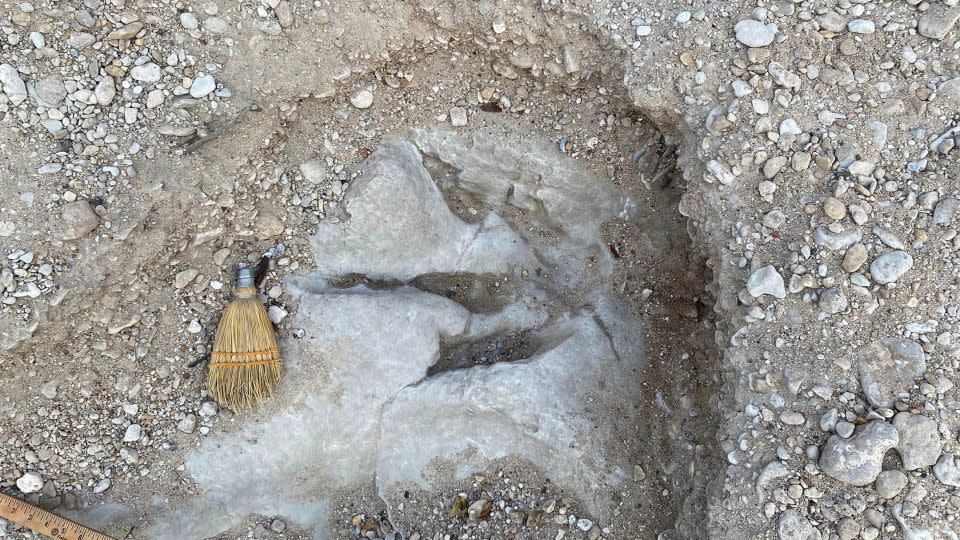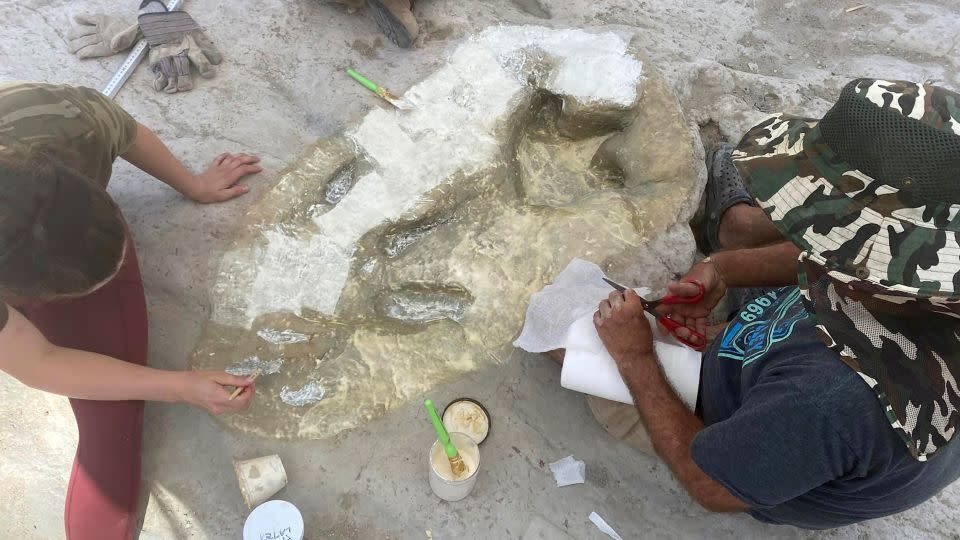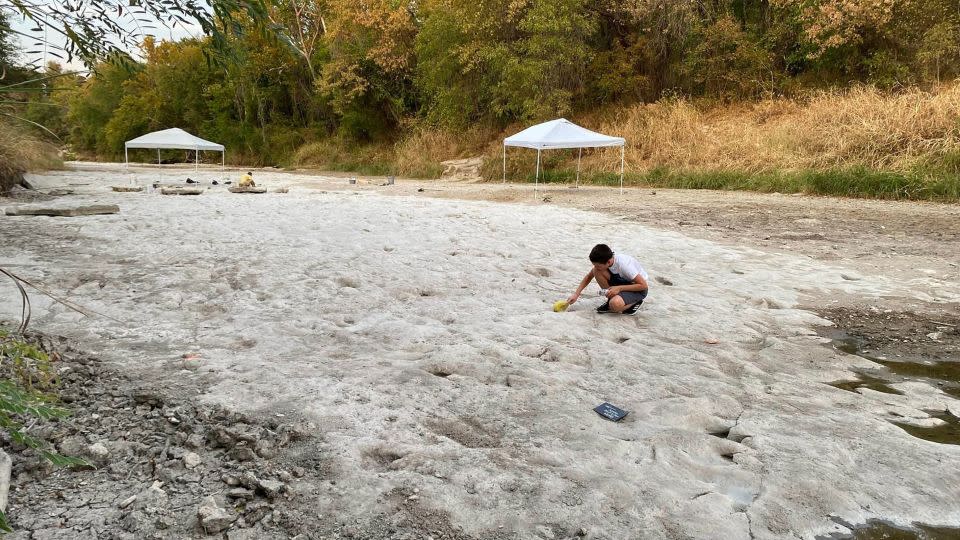Low water levels reveal dinosaur tracks dating back 110 million years
As Texas baked in record-breaking heat this summer and a growing drought pushed water levels down, a group of volunteers uncovered something sort of magnificent: new giant dinosaur tracks that are believed to be from around 110 million years ago.
Paul Baker, the retail manager at Dinosaur Valley State Park, told CNN he has “never seen this many dinosaur tracks” before.
“It’s exciting to see something that nobody else has seen; it’s almost like a treasure hunt, in a way,” said Baker, who helps clean up and map dinosaur tracks at the park. “I thought I’d seen every dinosaur track there is, but within the last two years with the droughts we’ve had and the hard work by our volunteers, it’s just an amazing sight.”
Dinosaur Valley State Park, around an hour and a half south of Dallas, is home to a large number of dinosaur tracks imprinted by sauropods and theropods that lived in the area roughly 113 million years ago. It is a hotspot for dinosaur enthusiasts and tourists who typically flock the now-dry Paluxy River to fish, swim and kayak.
As water levels got lower this summer, more ancient history was revealed. A brutal dry spell has spread across parts of Texas since June, with extreme drought now covering more than a third of the state, the US Drought Monitor reported Thursday.
“This was the hottest June I’ve ever experienced, and I’m 45 years old now,” Baker said. “I don’t remember the riverbed being destroyed. It’s just bone dry.”
In the area where many of the new dino tracks were discovered, Baker said the limestone in the river bed shot up to 128 degrees Fahrenheit at times, and that heat is drying out the ground even more.

Finding a major piece of paleontological history is somewhat of a bright side to the extreme weather for Glen Kuban, who has been working and writing about the Paluxy dinosaur tracks in and around Dinosaur Valley State Park for more than 40 years.
And this year, Kuban’s work has largely been focused on cleaning two large sites in the park, known as the Ballroom and Denio sites, where he plans to expand the mapping of the park’s tracks to include those that were previously buried under mud and water.
They determined that the newly discovered tracks likely belong to two theropod species: an Acrocanthosaurus, which weighed up to 7 tons, and a Sauropodseiden, also referred to as Paluxysaurus, which weighed around 44 tons.
“It’s important to clarify that the drought does not magically unveil tracks in pristine condition,” Kuban told CNN. “Even when the river is dry, the tracks are typically under extensive amounts of gravel, sand and dried mud. It takes many volunteers many days — in this case weeks — to remove the sediment covering and filling the tracks.”


Last year, Kuban organized a group of volunteers, including members of the Dallas Paleontological Society, Master Naturalists and the Friends of Dinosaur Valley State Park, to clean and map the longest dinosaur tail in North America — over 130 steps — as well as several tracks near it. All the while, Baker provides them with supplies, equipment and logistics support, while also helping with the research.
Baker was raised in Dinosaur Valley State Park – his father was a park manager for 30 years – and now operates several businesses, including the park’s gift shop. He said helping uncover dinosaur tracks is “extra special,” it allows him to “give back to a place and community that I love and helped raise me.”
The drought allowed them to go back in time and chronicle history, but that doesn’t mean the ongoing drought and record-high temperatures should be discounted, Baker said. As someone who grew up swimming and fishing along the Paluxy River, which has now been drained by the drought, he said it’s a “give-and-take” situation.
“It’s neat to see the tracks like this, but I do miss the river,” he said. “The Paluxy River is normally a beautiful, beautiful river.”
Read more:
A 3,400-year-old city in Iraq emerged from underwater after an extreme drought
Drought-stricken Lake Mead receded to reveal a World War II-era landing craft
Lake Mead water crisis exposed volcanic rock from eruptions 12 million years ago
The drying Danube River revealed explosive-laden WWII Nazi warships
For more CNN news and newsletters create an account at CNN.com

